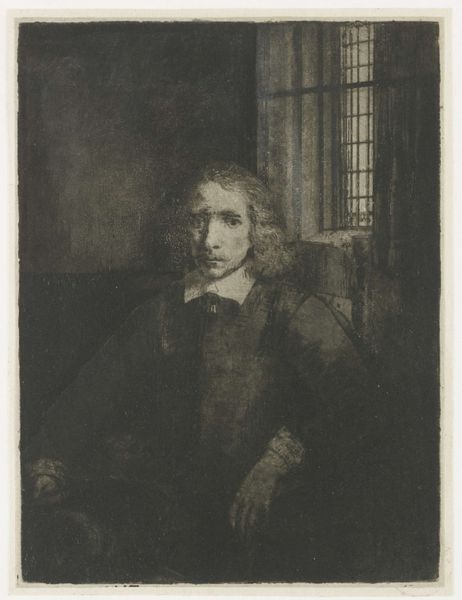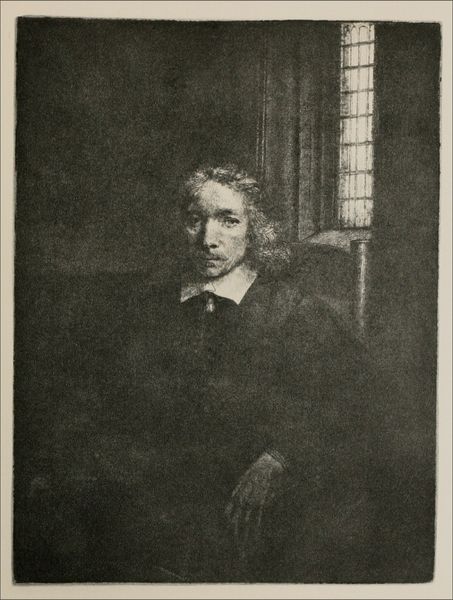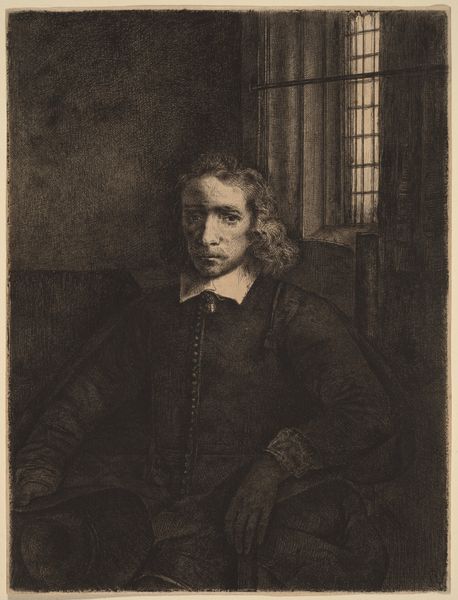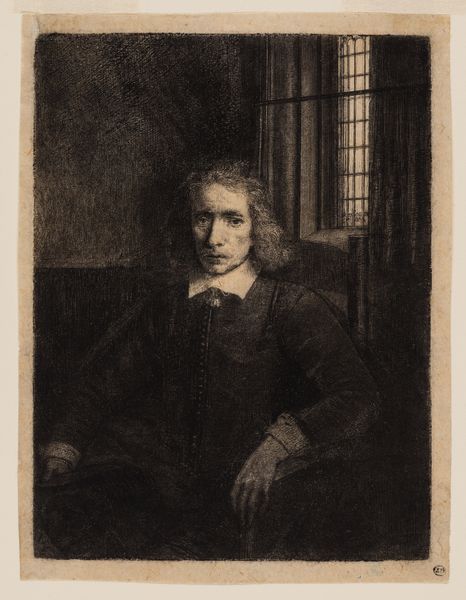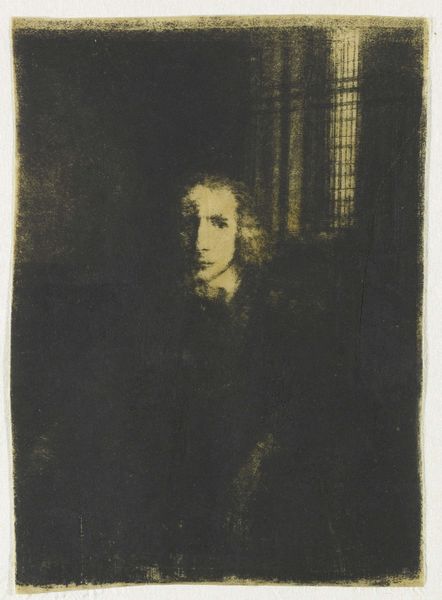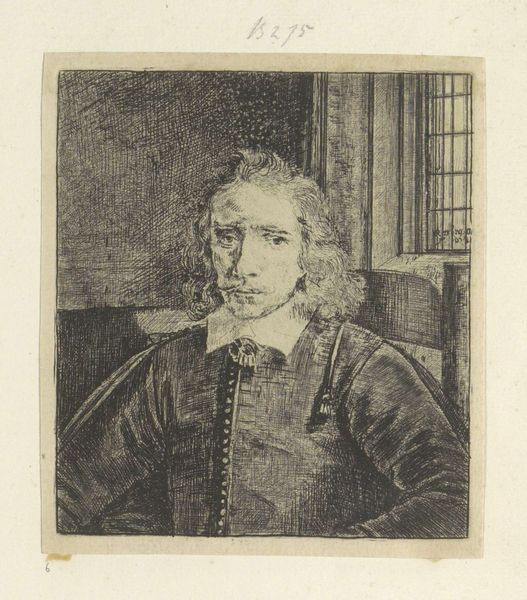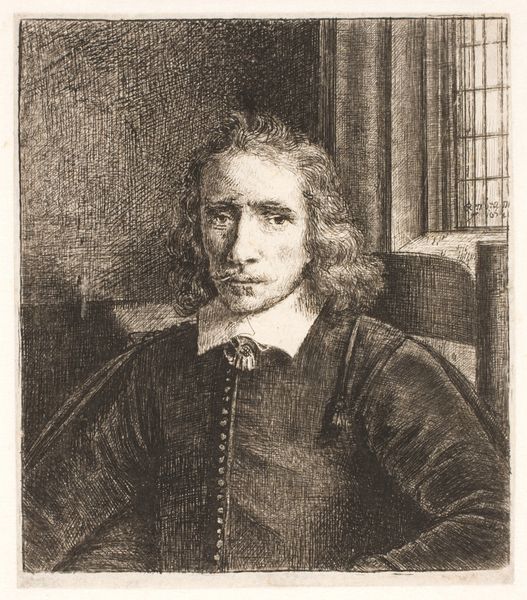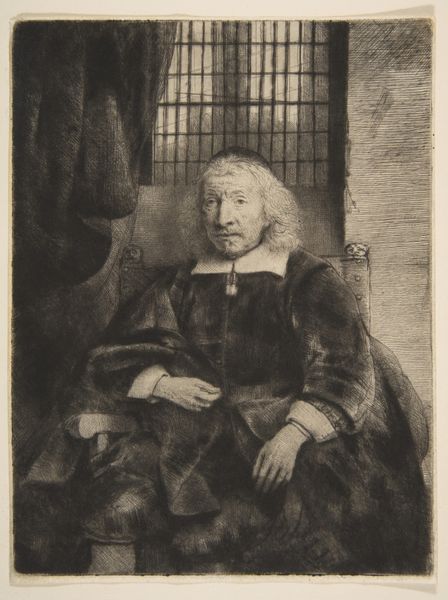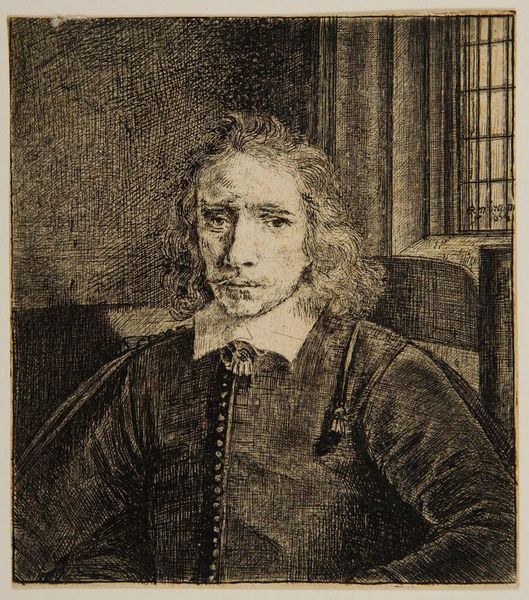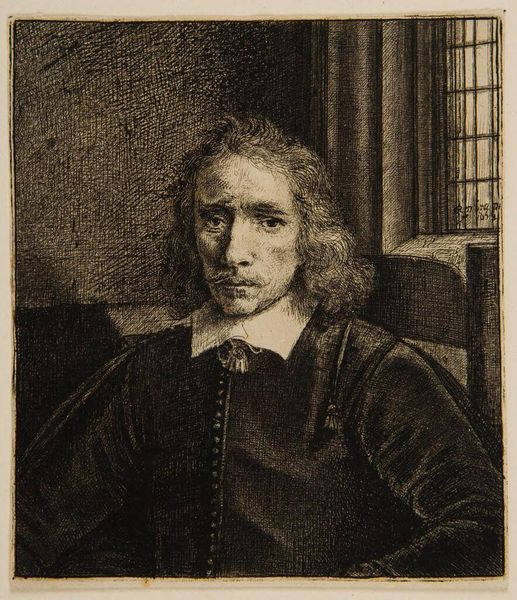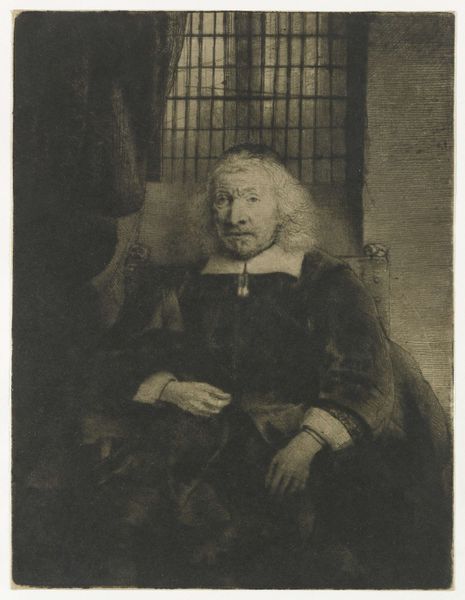
print, etching
#
portrait
#
baroque
#
dutch-golden-age
# print
#
etching
#
charcoal drawing
#
figuration
#
pencil drawing
#
portrait drawing
Dimensions: height 197 mm, width 148 mm
Copyright: Rijks Museum: Open Domain
Editor: This is Rembrandt van Rijn’s etching of "Pieter Haaringh," created around 1655. The sitter seems rather melancholic; a sense of quiet contemplation permeates the image. What are your thoughts on it? Curator: It's interesting to consider this print through a socio-political lens. In 17th-century Netherlands, portraits were often commissioned by the wealthy merchant class, solidifying their status. Haaringh's serious gaze and simple attire reflect the values of the time—hard work, piety, and civic duty. Considering that it’s an etching rather than painting makes this accessible for more than just an elite group. Do you agree? Editor: Absolutely, I hadn't considered that the medium democratized it in some small way. It strikes me as being intentionally unostentatious given the broader Baroque aesthetic. Curator: Yes. Rembrandt often used light and shadow to emphasize the humanity of his subjects. There’s a quiet dignity here that transcends wealth and status. Look at the hands, subtly rendered but suggesting intelligence and capability. It compels viewers to reconsider traditional power dynamics. Editor: That is an insightful observation. The hands are indeed captivating. Do you see a relationship between that level of detail and his activism through art? Curator: Absolutely. By portraying individuals like Haaringh with such depth and sensitivity, Rembrandt challenges viewers to look beyond surface appearances and recognize the inherent worth of every individual, regardless of their position in society. How do you see it now, having thought about it through that activist lens? Editor: I see it as a social statement through the accessibility afforded by the etching process combined with the man's introspective and unidealized presentation. I'll definitely carry this activist perspective with me. Curator: It’s a testament to how art can engage in critical dialogue about the human condition, power, and the search for a more just world.
Comments
No comments
Be the first to comment and join the conversation on the ultimate creative platform.

